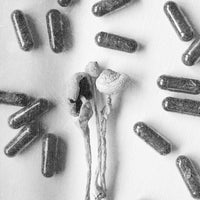Three digits are easier to remember than nine. On July 16, 2022, The National Suicide Prevention Lifeline shortened its phone number from nine digits to three: 988. Like other three-digit numbers we’re trained to remember from youth—such as 911 for emergencies or 311 for non-emergency municipal services—988 is designed to be easy to recall.
And it’s just as important. Suicide is one of the leading causes of death in the United States, with the CDC reporting one death by suicide every 11 minutes in 2020. As Vibrant Emotional Health, the nonprofit administrator of the new lifeline, puts it, “hope has a new number.”
A Step Toward Addressing the Nation’s Mental Health Crisis
Dialing 988 will also link callers to the Veterans Crisis Line, and signifies a bigger transition within government department SAMHSA’s (Substance Abuse and Mental Health Services Administration) efforts to address the nation’s mental health crisis.
Prior to 988’s launch, in March of this year the Biden Administration released an official statement outlining a strategy to address the nation’s mental health crisis, citing 988 in the agenda as, “someone to call, someone to respond and somewhere for every American in crisis to go.”
The US Department of Health and Human Services website states that the Biden-Harris administration has invested $432 million into the infrastructure and development of a robust crisis care system. This number is part of an unprecedented amount of resources the Biden Administration has outlined and contributed toward the mental health crisis.
The 988 lifeline launched in July 2022, but it has been in the works since 2020 when The National Suicide Hotline Designation Act was signed into effect, requiring “the Federal Communications Commission (FCC) to designate 988 as the universal telephone number for a national suicide prevention and mental health crisis hotline.”
The Push to Stop Policing Mental Illness
Making sure people know the number to call is only part of the 988 initiative. They also want people to know what happens after the receiver picks up—which is just as important.
The National Alliance on Mental Illness (NAMI) advocated for the 2020 National Suicide Hotline Designation Act, the bill that first named the 988 initative. NAMI’s Crisis Prevention Advocacy page connects 988 with another national issue: the link between mental health and law enforcement. The organization details the disproportionate amount of mentally ill people who have ended up behind bars, or have been fatally shot by police. They cite the fact that “one in four fatal police shootings between 2015 and 2020 involved a person with a mental illness.”
The 988 website provides a comprehensive breakdown of exactly what happens when you call the number. First, an automated “You have reached …” message plays with the options to press 1 if you’re calling for the Veteran Crisis Line or 2 for Spanish. There’s a short music break before the network connects the caller to a trained crisis counselor who listens and responds accordingly, pointing the caller to further resources and services if necessary. The 988 program also has online chat and texting functions where individuals are first met with a short survey before a counselor takes over. In every option the 988 program offers, the caller or texter will talk to an actual human.
Though 988 is being positioned as the “new 911” for mental health crises, in which mental health counselors are mobilized rather than police enforcement, there are many questions being raised about the linkages between the two numbers. SAMHSA’s 988 FAQ page answers several questions pertaining to 911. In response to “How will 988 and 911 complement each other?” SAMSHA states:
“[The] 988 and 911 systems will need to be closely coordinated to seamlessly allow referral of callers for appropriate care or response that addresses the unique circumstances present with each crisis encounter.”
Although 988 was created as an alternative to 911, the two are linked. The “alternative” framework actually belies the fact that calling 988 does not prevent involvement from 911. Further, as of a month after the 988 launch, there is already wariness of the new number circulating on social media, in which individuals are calling out the system for maltreatment.
Funding and Operational Concerns
The 988 network consists of about 200 local call centers spread out across the U.S., each staffed with mental health counselors. A network of this many crisis centers sounds significant and impressive, but like most federal programs, 988’s success will depend on what goes on at the local level. Wording on the SAMSHA website candidly states that “the federal government cannot do this alone.” The website suggests that local entities will need to make additional investments in their crisis care systems in order for the program to be sustainable long-term.
Under the previous National Suicide Prevention Lifeline phone number, 1-800-273-TALK (still in operation but routing to 988), one call center was mandated per state. Operations and capacities varied. This Politico article details federal concerns about crisis call spikes and call center capacity and outlines the difficulties states are facing in securing funding for 988. It contrasts states like Mississippi, whose mobile crisis response systems have been expanding since 2014, with states like Nevada, whose one call center was previously only volunteer operated. In numbers, Mississippi answers 89 percent of its calls, compared to Nevada’s 65 percent, as the article explains. The piece also outlines how discrepancies in local infrastructures and preparedness caused SAMHSA to downplay 988 from a full-fledged launch to more of a transition.
One possible source of financial relief might come from cell phone fees, a strategy outlined by the National Suicide Hotline Designation Act of 2020 as fundamental for strengthening local call center capacity. This is the same funding approach used to support 911, called Enhanced 911 (E911) fees. NPR recently reported that only four states have passed legislation to add these fees to cell phone bills. The National Emergency Number Association (NENA) which is dedicated to 911, outlines the E911 fees per state in this breakdown. Time will tell whether federal and state entities are able to ensure that call centers across the nation can operate at capacity in the long-term.
Despite funding concerns, 988 has seen increases in usage, reporting that The National Suicide Prevention Lifeline answered 50,000 more calls in June of 2022 than June of 2021. This increase, however, seems less to do with the number switch to 988, and more to do with Vibrant Emotional Health’s efforts (with SAMHSA’s multi-million dollar investment) to increase support for national backup centers prior to the launch. There’s little reporting of usage data post 988 launch, but in a recent statement Assistant Secretary for Mental Health and Substance Use Miriam Delphin-Rittmon shared that the lifeline saw a 45 percent increase in total volume and that counselors answered 23,000 more calls, texts and chats than the previous week.
Aside from funding and sustainability concerns, the launch of 988 does signify that the national government is taking suicide and mental health seriously. Previously underfunded and under-resourced, The National Suicide Prevention Lifeline’s expansions mark progress, particularly in long-term efforts to divert 911 emergency calls to 988 support calls. It remains to be seen how local centers will manage the spiked increase in callers, but the fact that more people are picking up the phone in the first place is a positive step toward mental health crisis and suicide prevention support in the U.S.
Mira Kaplan is a Boston-born and LA-based freelance writer. With a background in Urban Studies and Art History, her work lies at the intersection of music, art and community engagement. Whether creating soundscapes from traffic noise or photographing pink things in public spaces, curiosity drives her storytelling.
Read more: Can Breathwork Improve Your Mental Health?
Read more: Why We’re (Still) Taking a Stand for Psychedelics
Read more: Raghu Appasani’s Mindful Path




